Rokinon Af 50mm F/14 Fe Lens for Sony E Reviews

The release of the truly impressive new Sony a7R3 camera (and now the Sony a73!) has caught a lot of our attention. The a7R2 also caught my attention considering of a great spec listing and an impressive sensor, but when I spent fourth dimension with information technology in 2017 I was left feeling a petty ambiguous. It was but defective in a few key areas and had more compromises than I was personally willing to brand. When I got my hands on the a7R3, however, it was a different story. Within just a few days, I knew this was a photographic camera I could happily use. My long term review revealed some weaknesses simply a whole lot of positives. One of my viewers summed up my feelings well when they commented on how much they were enjoying using the camera. I enjoyed using the photographic camera, and, as a outcome, made the decision to purchase one for my ain kit. But at the time of buy I owned no full frame (FE) native lenses for it. One of the most useful lenses for whatever photographer (and any arrangement) is a good 50mm lens. And so, I fabricated my first project after purchase a three way comparison showdown between the 3 top autofocusing 50mm options for the organisation: the Sony/Zeiss 50mm f/1.4 Planar T*, the Sony/Zeiss 55mm f/1.eight Sonnar T*, and the Samyang AF 50mm f/ane.4 (futurity known every bit the Planar 50, Sonnar 55, and Samyang 50). Is the one in the center the "Goldilocks" of this trio? Read on to find out…

These reviews will share some cadre content (like this intro), merely will break into individualized reviews for each lens.
Prefer to watch your reviews? Here is the full, detailed final video review on the lens.
Cheque me out on: Google+: | Facebook: | Twitter: | Flickr: | 500px: | Sign Upwards for My Newsletter :
Build, Handling, and Specifications
For lenses that are roughly similar in their basic design (wide aperture 50mm lenses), at that place is a surprising amount of difference in the size, weight, and price of these lenses. The heaviest option (Planar fifty) is more than twice as heavy every bit the lightest (Sonnar 55), and the most expensive option (Planar 50) is about 2 ½ times equally expensive as the to the lowest degree expensive (Samyang 50). Using U.s.a. market prices from B&H Photograph (who supplied me retail loaners of each lens) at the time of review, the Samyang costs $599, Sonnar 55 $898, and the Planar 50 is $1398.
I would recommend that you watch this video where I give you a close look at the pattern and handling of the Samyang 50:
Here'south a chart breaking downwards the other basic specifications of each lens.
| Lens | Weight | Diameter | Length | Min Focus | Magn- ification | Filter Size | Optical Formula |
| Sony 50mm f/1.4 | 27.36oz 778g | 3.29" 83.5mm | 4.25" 108mm | 1.48' 45cm | 0.15x | 72mm | 12 elem 9 groups |
| Sony 55mm f/i.8 | nine.91 oz 281g | 2.54" 64.4mm | 2.78" 70.5mm | 1.64' 50cm | 0.14x | 48mm | vii elem 5 groups |
| Samyang 50mm f/1.4 | 20.64oz 585g | 2.89" 73.5mm | iii.85" 97.7mm | 1.48' 45cm | 0.15x | 67mm | 9 elem viii groups |
It should be noted each of these lenses have a great feel to them. They all feel similar premium lenses, with a lot of metals in their structure. They are all very handsome lenses, too, with a blackness anodized end. The Samyang sports a very nice looking bright red accent ring that is reminiscent somewhat of Catechism's 50 series save in a brushed aluminum finish that is arguably more elegant.
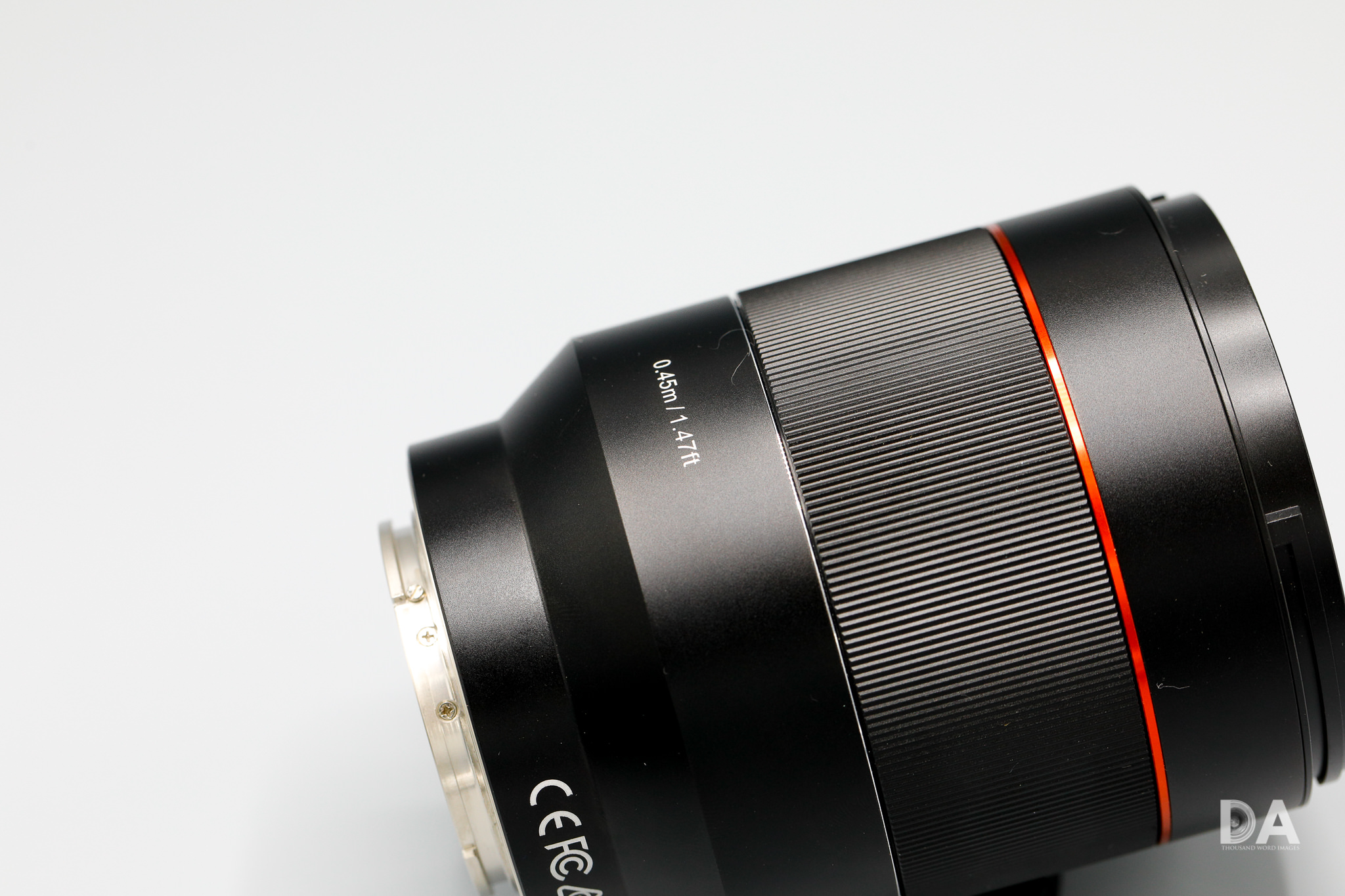
The Samyang 50 is a beautifully built lens. It has a nice anodized cease on what feels like an aluminum blend body (similar to Tamron's SP primes). The finish is broken upwardly by the ribbed focus ring, with a nice red accent band in aluminum beyond that. A petal shaped lens hood is included, and, while it is plastic, information technology actually feels a chip sturdier than either of the Sony hoods. On the left side of the barrel is the Samyang logo, with the lens designation on the acme (AF 50/1.4 Atomic number 26), and the minimum focus distance on the right side of the butt. The lens serial number is stamped on the lens mountain, as is the information that this lens (like all Samyang lenses) is made in Korea.
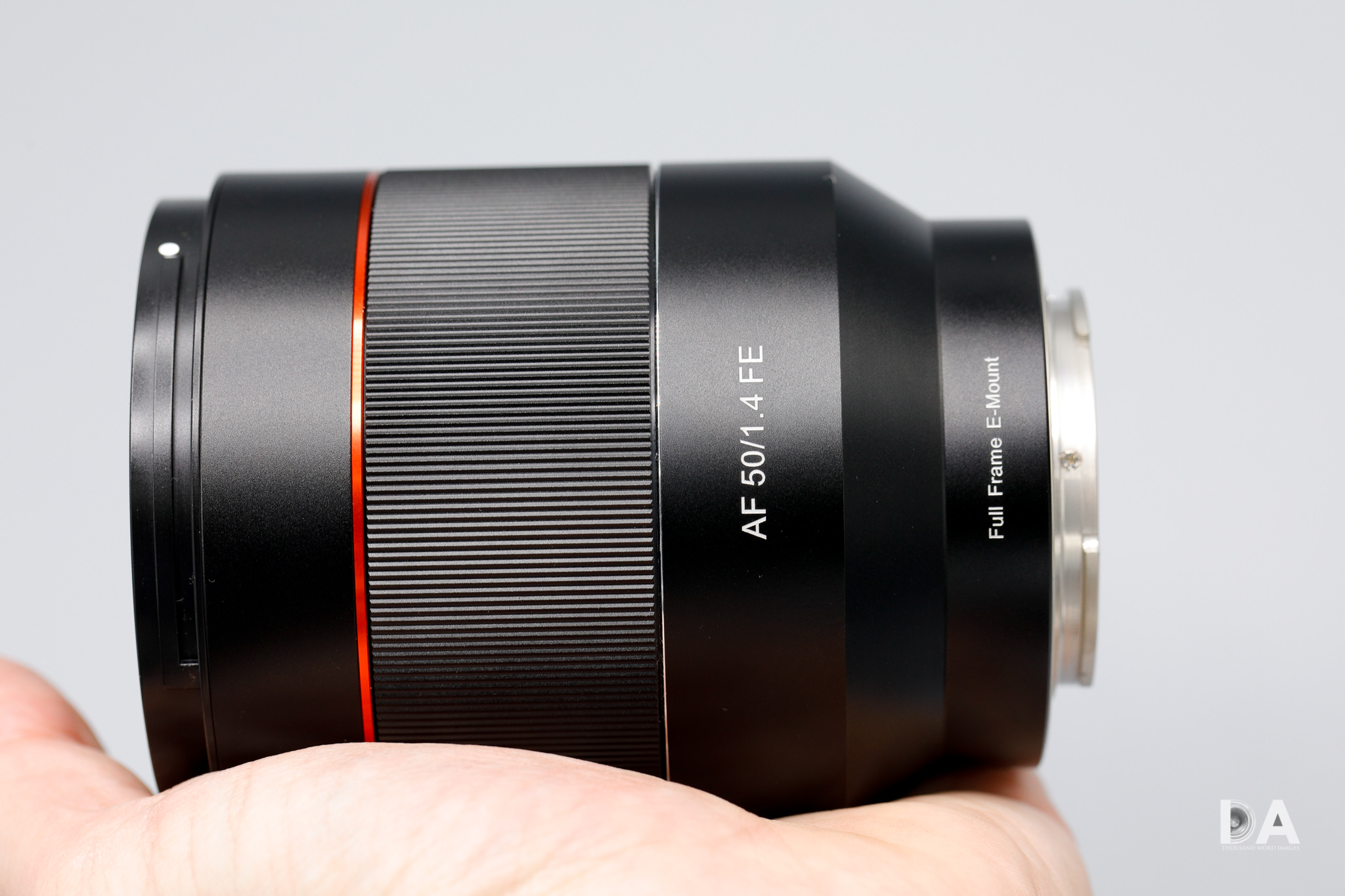
It has a wide focus band (near ane ½ inches) with the weight a little on the lite side. Out of the 3 options, the Samyang'southward damping is the lightest, merely information technology's a little too low-cal, leaving the impression that you could easily move right past your focus point without enough resistance in the fine-tuning stage. Similar most "focus by wire" lenses, the Samyang 50 lacks some tactile feedback due to having no straight coupling to the lens elements. The focus band only accomplishes something if the photographic camera is in MF (or DMF) mode and powered on. Input from the focus band in routed through the focus motor on the lens, which moves the elements. The focus feel is a little "numb", and there can be the slightest bit of input lag between your input on the focus ring and the actual focus movement. In manual focus mode the focus motor makes a gritty kind of whine that isn't overly reassuring; manual focus focus is a rather "nervous" experience with the Samyang l. Samyang's lack of experience with autofocus motors is mayhap in evidence hither. Nosotros'll explore that a little more in the autofocus section.
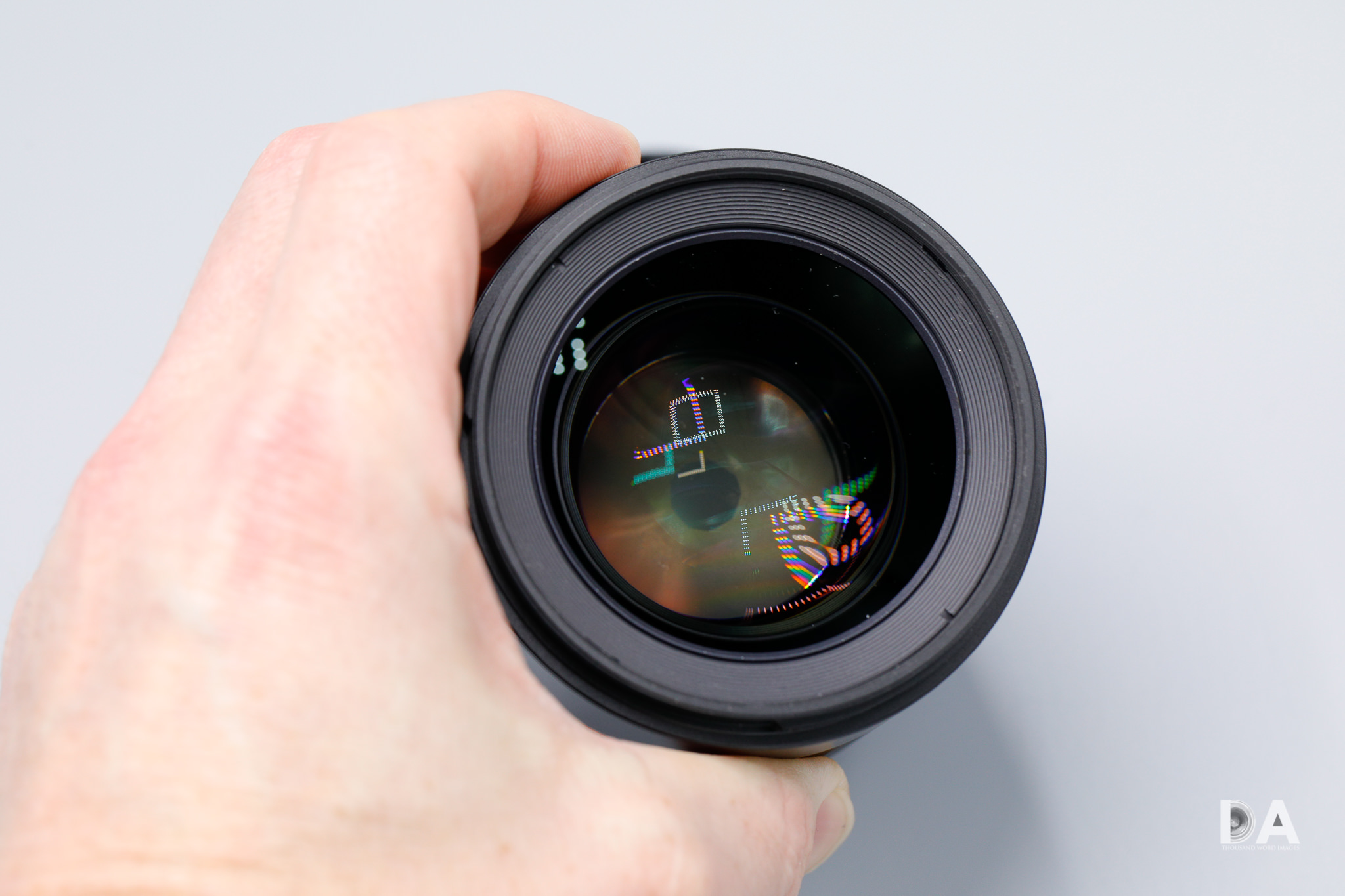
At the front end of the lens nosotros find metallic rather than plastic filter thread. The lens has a highly standard 67mm filter size shared with a lot of other lenses, which is always helpful. There is no front branding of any kind. Samyang's Ultra Multi-Coating (UMC) has been applied to various elements. The discontinuity iris has nine aperture blades which are rounded and help retain a circular discontinuity even when stopped down. While the build quality is high on the lens, it does lack any kind of weather sealing, which is unfortunate. At that place is no rear gasket at the lens mount.

The lens looks proficient mounted on contempo Sony cameras (it looks like information technology belongs), and the moderate size and weight means that information technology balances well on the full frame models and reasonably well on the smaller APS-C models.
Focus Noise, Speed, and Accuracy
The Samyang l is not a very good lens for video AF. The lens makes a lot of high pitched whirring noises during focus and is also the least confident for face tracking. It makes a lot of pocket-size corrections, every bit if second guessing itself, and volition occasionally become out of focus before picking proper focus support. I did shoot a video segment with the lens, but had to majorly edit to cover upward moments when it lost focus. Samyang now makes a Lens Station whereby yous can apply firmware updates and make tweaks to lens behavior, so I wouldn't be surprised if firmware farther tweaks focus algorithms to smooth out focus beliefs, but firmware tin can't change the actual nature of the focus motor and the noises it emits…which are frankly non very reassuring. I did not have admission to the Lens Station during my review, as it is still not widely distributed.

For stills shooting, Samyang's lack of experience with autofocus is betrayed in the Samyang 50. Autofocus speed is the slowest of the trio and is the to the lowest degree confident. In that location is some occasional hunting, which is exaggerated by the somewhat painful noises the lens motor makes. Information technology actually focuses fairly quick, though at that place is a split-2nd interruption before the elements begin to move and sometimes a brief pause before final focus lock is accomplished. I'thou reminded of the sound/sensation of before lenses with micromotors. A fiddling buzzy and unrefined. I remember that the imperfections of the focus are exaggerated by the refined beliefs of the two competitors. The corporeality of racket made by the focus motor makes one more aware of what's going on with focus in general, which in turn makes you a little more disquisitional.
My actual autofocus accuracy was pretty good, though I did annotation more missed shots than with the Sony lenses, and in that location were definitely occasions when the lens would rack focus looking for the proper focus bespeak. Once it locked, however, it was unremarkably accurately focused.
One thing to note with any of these lenses is the fact that depth of field can frequently be extremely small when working at shut focus distances. I tend to employ Sony's mirrorless AF system a trivial differently than a DSLR, where I personally was most likely to choose a single AF indicate and identify it where I wanted it (typically effective). Because of different AF options, selecting an individual AF point on, say, a Sony a7R3, is less necessary. I actually tend to employ the wide zone and then utilize face tracking and/or Eye AF to augment that. When working with a field of study with optics, Sony has refined this engineering to about-perfection (particularly if they are facing the camera). Eye AF works fine with the Samyang 50, with the refined focus point post-obit my subject effectually accurately. On some occasions if the subject'south face up moves towards contour the lens did lose tracking and do a focus rack where, for a second or 2, focus was completely lost, simply for the most role I got adept results with Center AF. Even without Eye AF engaged the camera was quick to recognize when a face was in the frame.
When you can't apply face detection or Eye AF, however, you may need to adapt your approach to get the area you want in focus. If the autofocus doesn't take hold of the area I want, I simply override with my pollex on the touchscreen and motility the "Flexipoint" around when I want information technology. This is typically effective, though with very narrow depth of field shots even the Flexipoint AF box is a little bit large, and the area selected may not exist perfectly what you had in mind. I recommend a couple of alternate approaches. The first is to magnify the image, which refines downwards the focus expanse. The 2d is to enable DMF equally your focus manner, and, if you feel the autofocus has not grabbed the point you want, just turn the manual focus (MF) ring to enable manual override. The great matter well-nigh all three of these lenses is that, in that scenario, the prototype automatically magnifies on either the LCD screen or in the viewfinder, making it easy to refine focus to the exact spot that you want. The former method may be preferred with the Samyang 50, however, equally it's manual focus procedure isn't as refined as the two Sony lenses I compared it to.
Prototype Quality
My feel says that many photographers are willing to put upwards with a petty focus noise (or even manual focus), pay more, or tolerate larger size and weight if the image quality results are exceptional. Permit me first say that the competition hither is very potent, and while there is a clear loser in terms of absolute sharpness and contrast, that lens has some other redemptive optical qualities. At that place is also a clear winner at the top, though the competition there is a little fiercer.
I did a comparison of epitome quality on both a 24MP APS-C (a6500) and 42MP full frame (a7R3), with fairly similar findings on both.
Samyang 50mm APS-C Result (Sony a6500)
You tin encounter a more detailed breakdown of my findings on APS-C in this video here:
At wide open apertures the Samyang 50 is noticeably softer than the other lenses in both the middle of the frame and also forth the edges due to reduced contrast and less resolution. Chromatic aberrations are less corrected on the Samyang fifty, which creates a bit of veiling at wide apertures. This axial chromatic abnormality reveals itself every bit a cherry-red purple fringing before the plane of focus and light-green fringing later it:
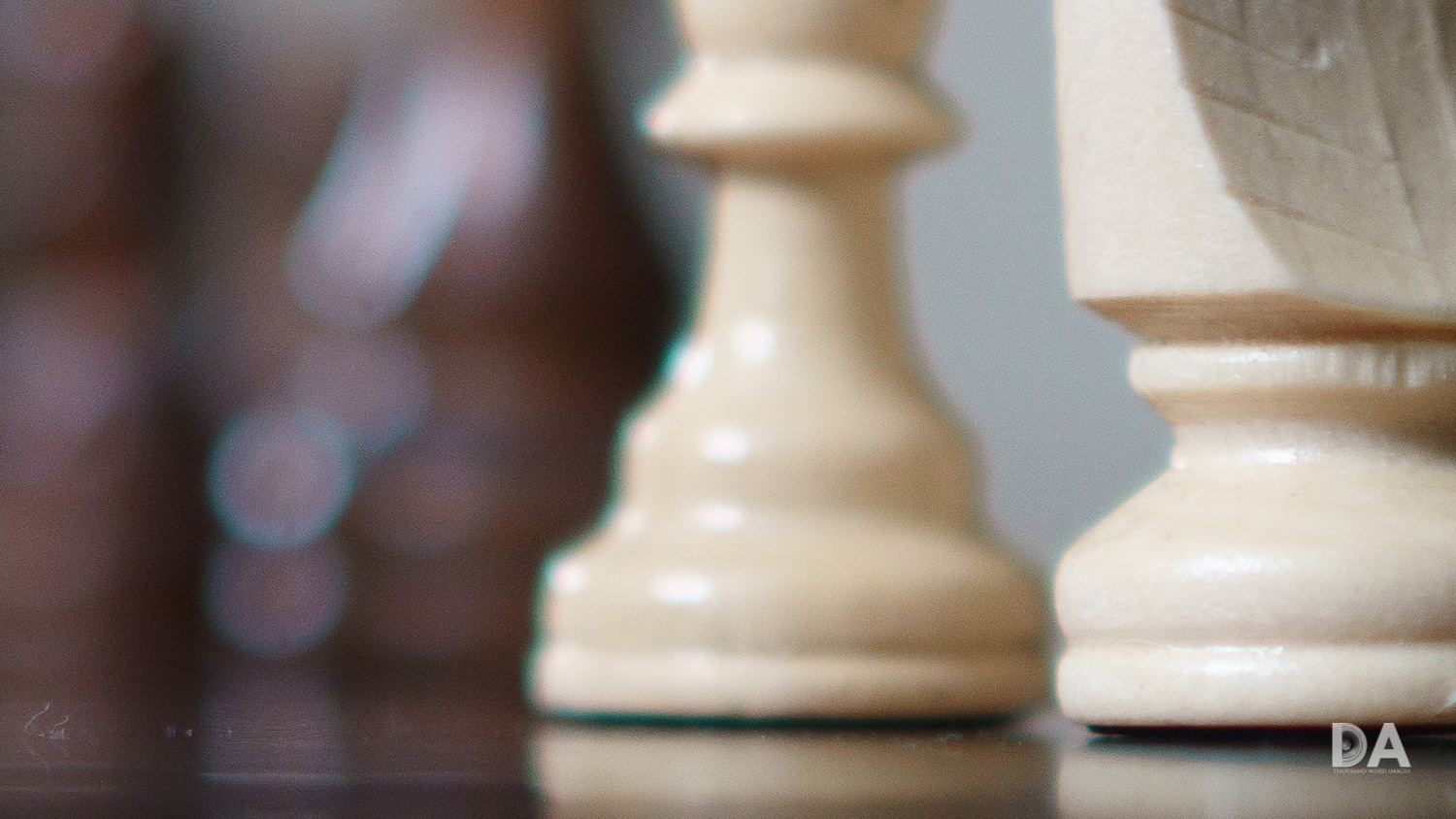
The chromatic aberrations reduce contrast, created a slightly "veiled" look to wide open image quality. You can come across the stop result in this portrait distance comparing even in the center of the frame:

Now, to exist fair, the Planar lens costs about iii times equally much, but even if nosotros compare to the Sonnar lens at f/ii, we see there is even so a significant difference in sharpness and contrast:
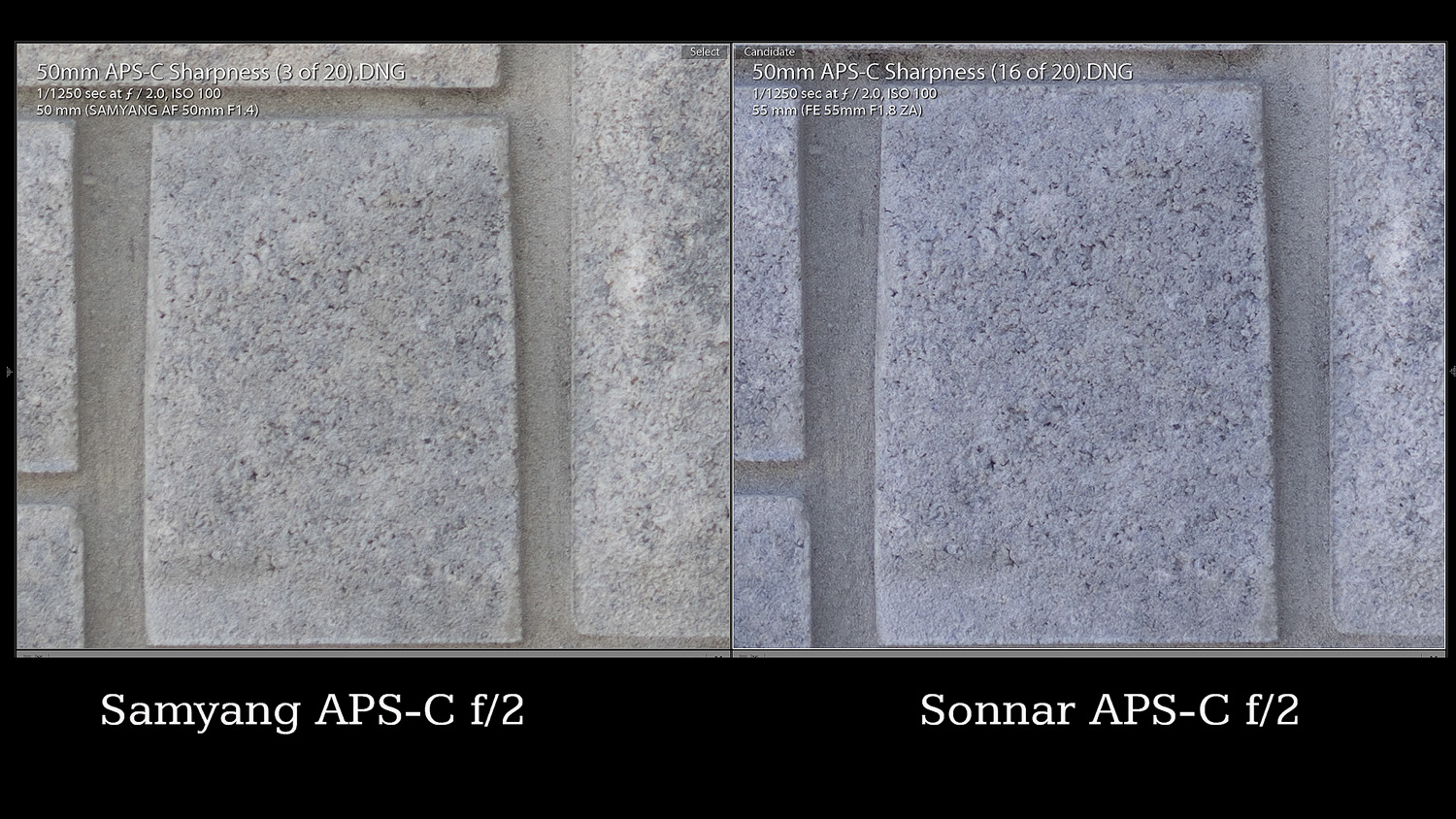
Corner contrast and resolution besides lags a little at f/i.4 compared to the centre, though not past a wide margin.
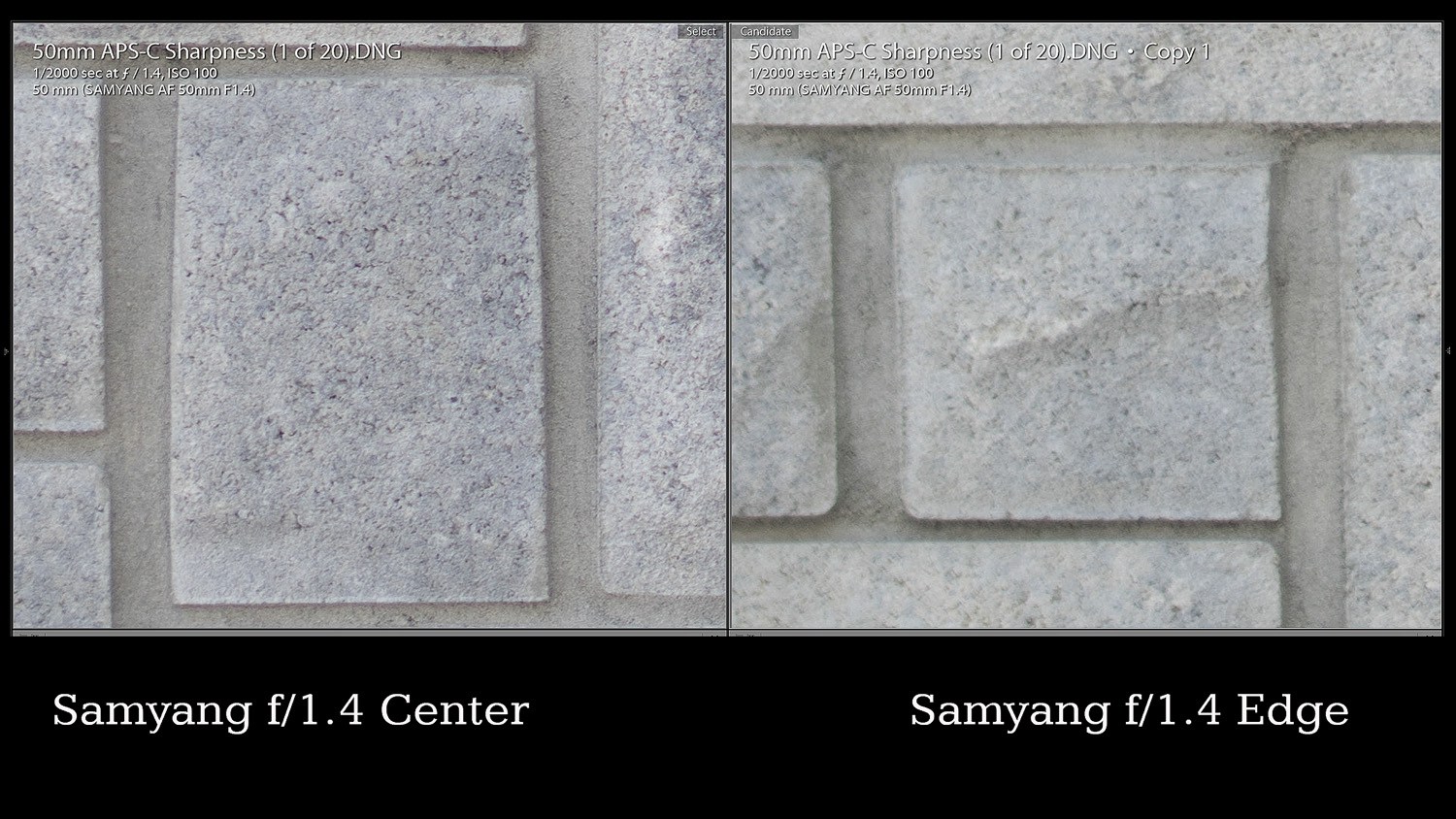
When stopped down, the lens is sharp and contrasty in the eye, and the edge only lags backside a chip on APS-C.
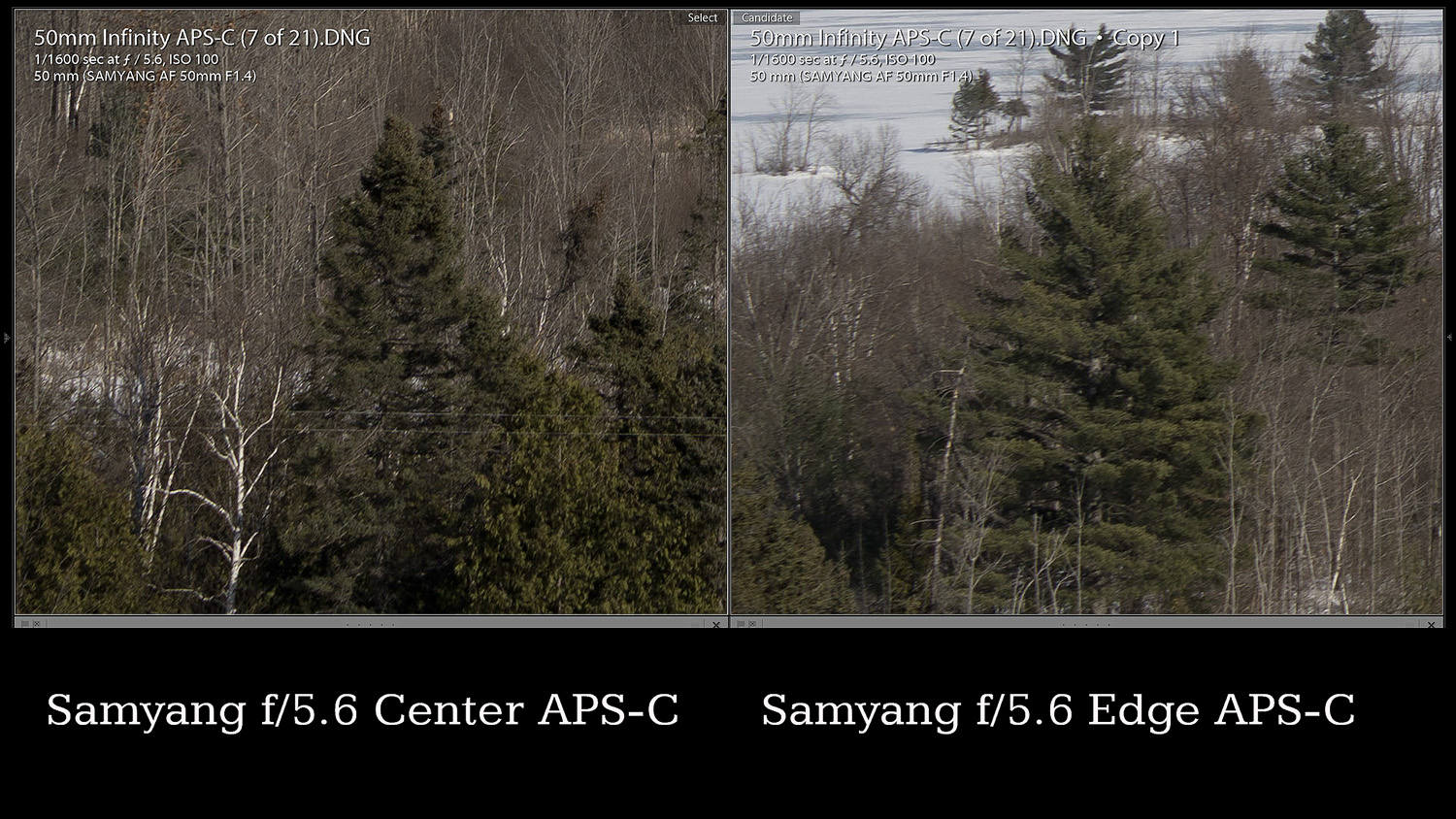
I like the lens for landscapes ameliorate on its native total frame than on APS-C.
The brilliant bespeak in the APS-C (and full frame) performance is in the bokeh performance and rendering, which is the nicest of this trio. Sometimes lenses with lower contrast and less absolute sharpness are the improve portrait/fine art lenses, where it is more about the "look" or "experience" of images rather than pixel peeping. People value the Canon 50mm f/i.2L and 85mm f/ane.2L for but this reason. I exercise like the images out of the Samyang 50 when viewed on a whole; I like them less on a pixel level.
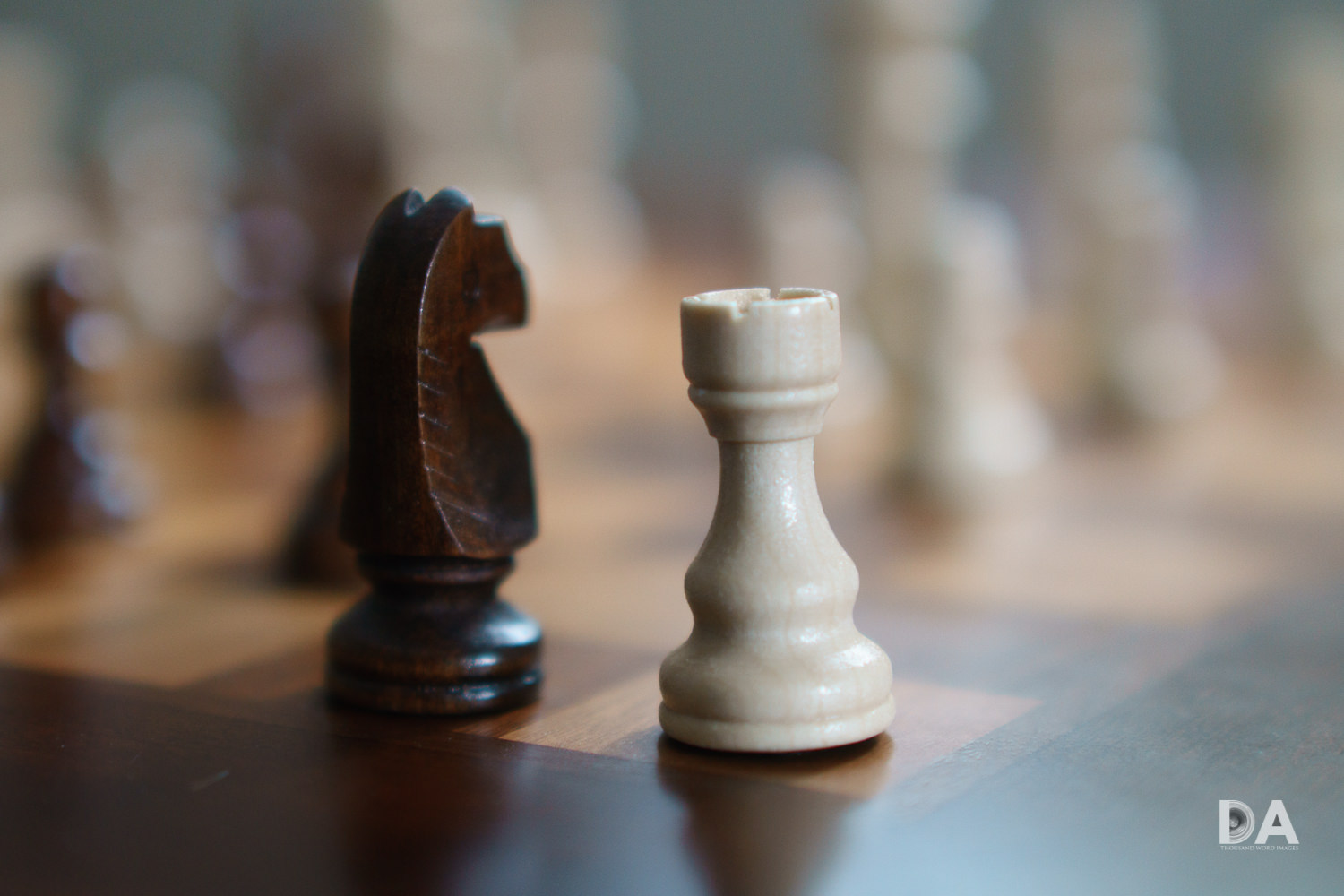
Here's a few APS-C samples that demonstrate what I'k talking about.
Samyang 50mm Total Frame Image Quality (Sony a7R3)
As before, y'all tin see an interactive breakdown of the image quality from the Samyang 50mm and how it compares to the two Sony options hither:
As previously noted, a lot of the APS-C observations are likewise truthful on the total frame Sony a7R3 (which isn't surprising due to the pixel pitch/density of the cameras beingness fairly similar). You can look a little more than vignette on full frame and a little less CA. Sony'south approach to lens profiles ways that even with this third party lens there is a "Built In Lens Profile" attached to both JPEG and RAW images. The images arrive at least partly corrected, though you lot can farther improve vignette operation by so adding the lens contour in Lightroom/ACR. In that location is also a very mild amount of barrel distortion that is corrected with the lens' contour in software. For the most part, however, what you lot go is an already corrected paradigm with simply minimal things left to do.
Distortion will not be a real factor for anything other than the most demanding situation, anyway, and then I don't consider this a real outcome. Hither'southward a look at an image with merely the embedded profile (on the left) and with the software profile also applied on the right. Note that this is at f/i.4, where information technology makes the biggest divergence:
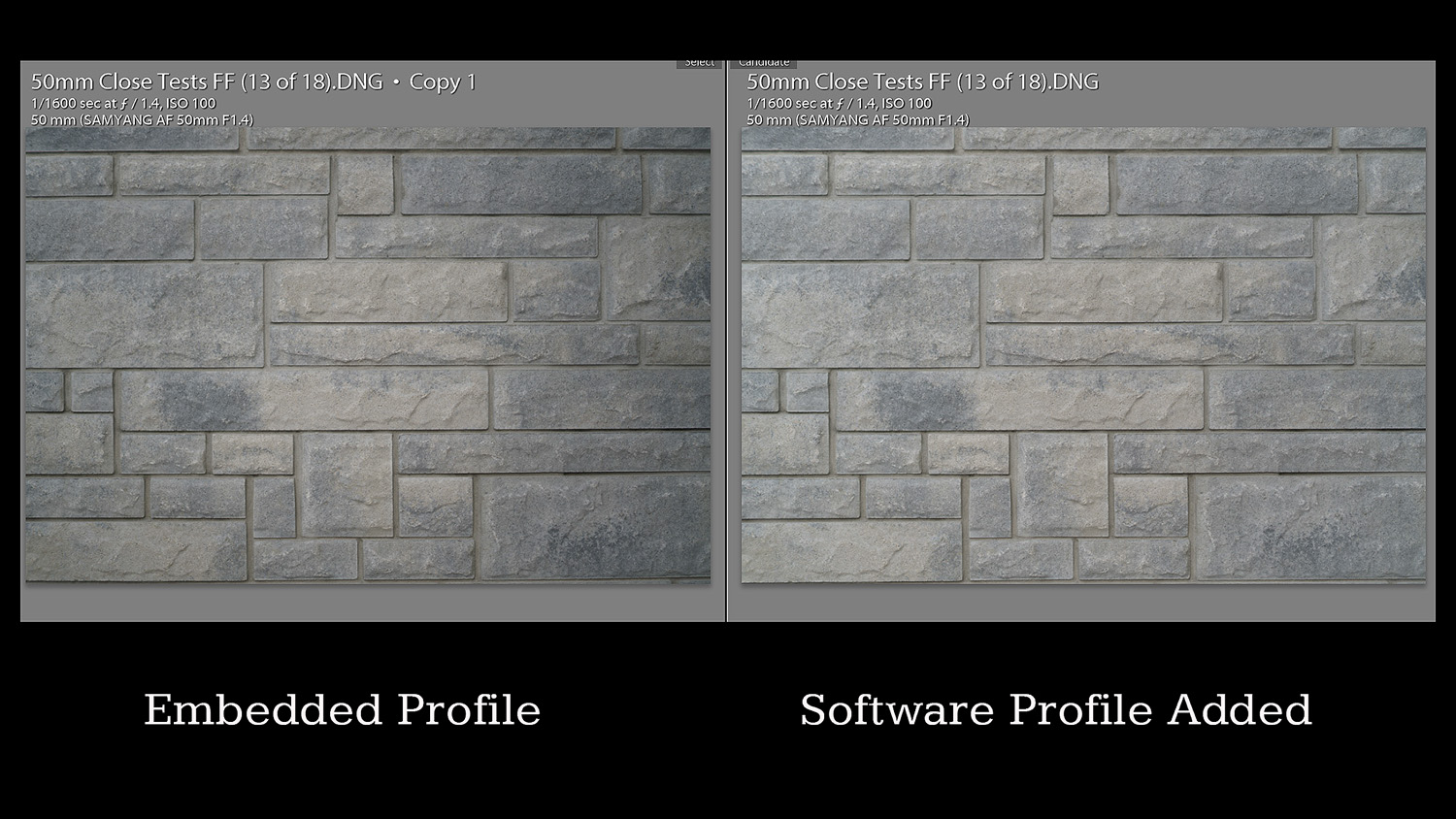
Calculation in the "remove chromatic aberrations" checkbox forth with a fiddling "dehaze" in Lightroom does aid improve epitome "punch", so you practise have options. The axial chromatic aberrations (regal fringing before and light-green fringing after the plane of focus) cause some veiling/lack of contrast, so the dehaze helps restore some contrast. The absolute resolution and contrast still doesn't compete with the Sony/Zeiss options in an accented sense, though. Still, I felt like these 2 steps made a noticeably improvement in my infinity focus images out on the edges.

Using the latter image, I compared the center and border functioning, and didn't really see a major difference. The lens isn't amazing sharp at either bespeak, but neither does edge sharpness strongly lag behind center sharpness.
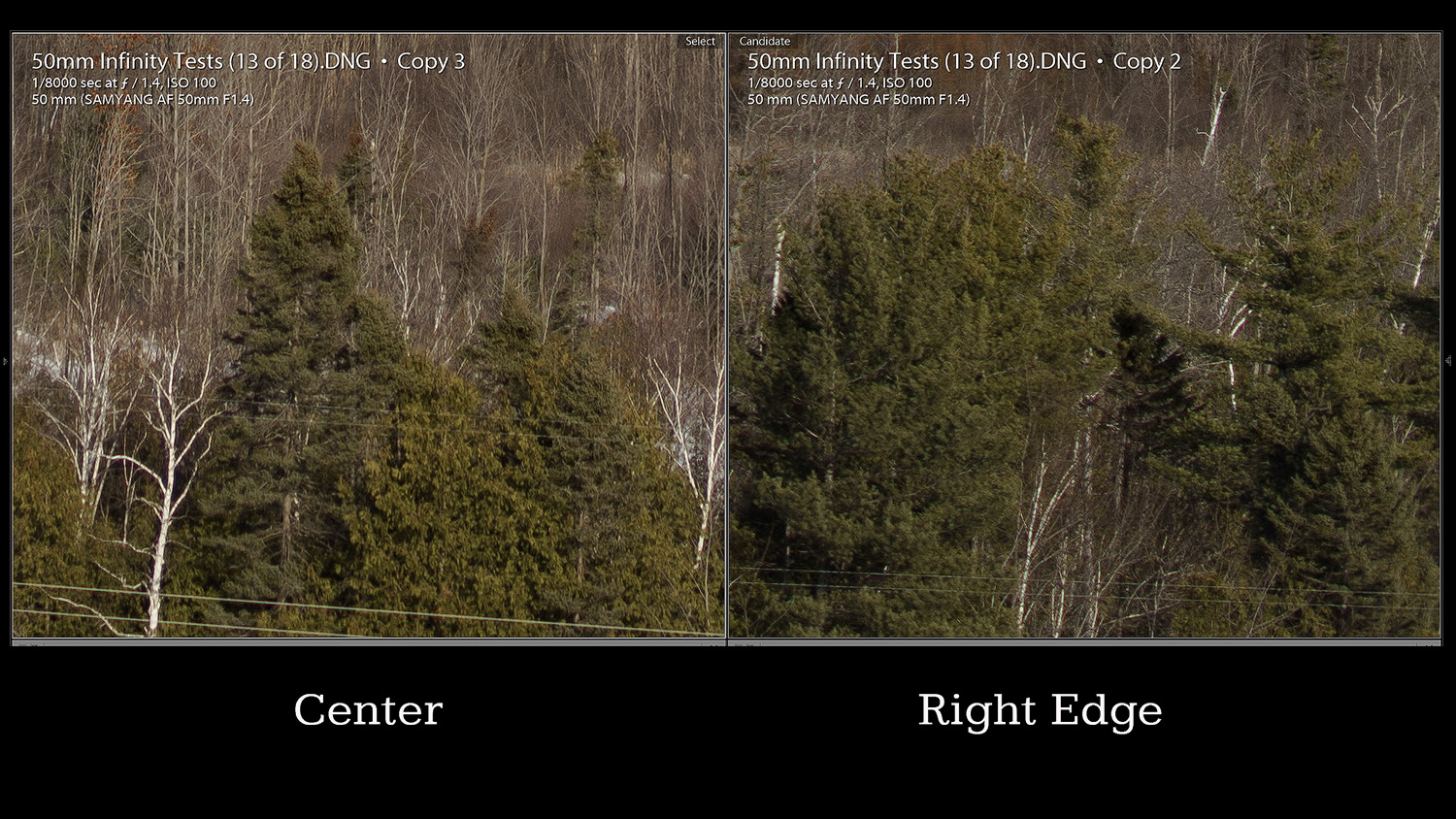
Image resolution and contrast makes minor improvements at f/2, and a petty more at f/2.8, but the biggest comeback comes betwixt f/2.eight and f/four. At that transition the axial chromatic aberrations are finally eliminated, and image contrast drastically improves, as does apparent resolution. Yous can encounter a big improvement between f/2 and f/4 in this example here:

If I compare the f/iv instance to the more than expensive 55mm f/1.8 Sonnar lens, there is even so a very mild advantage for the Sonnar, only it so small as to be hard to observe in regular field apply.
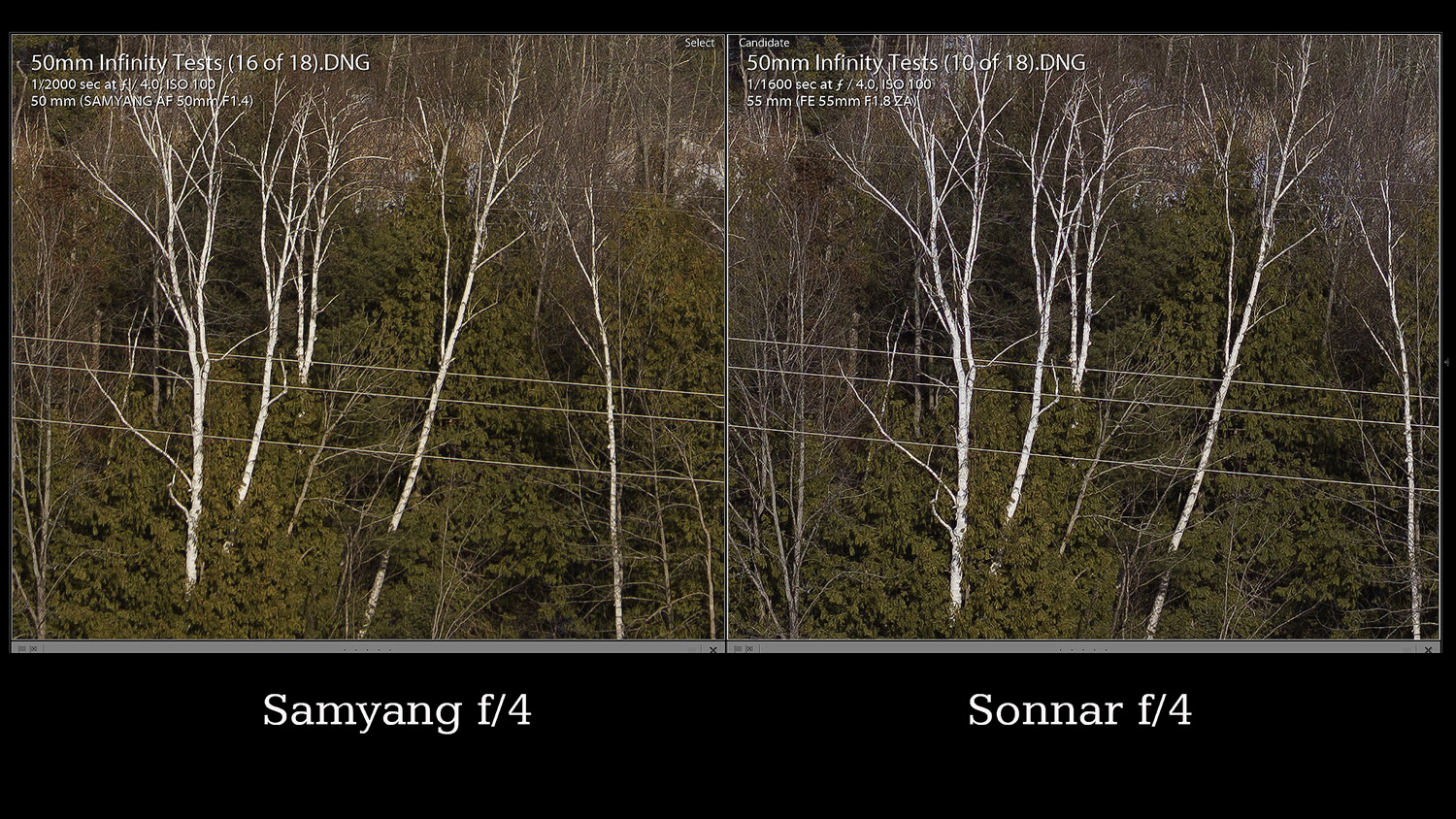
Only, as previously mentioned, while the Samyang 50 is the loser in terms of raw resolution and contrast, it does win in the bokeh rendering. The bokeh quality is the softest and least busy from the Samyang. Information technology is more optimized for portraiture than loftier degrees of resolution and contrast. The disadvantage of actually high microcontrast and sharpness is that it tin can be difficult to "turn that off" in defocused areas, and the Samyang's naturally lower levels of microcontrast and sharpness are really an asset in the defocused regions.
In these y'all can encounter how the bokeh rendering is less "busy" than the Sonnar and as well produced more geometrically pleasing shapes:
In this comparison to the very expensive Planar lens you can encounter how that the Samyang produces bigger, softer defocused highlights:
The latter comparison is interesting as it points to another Samyang advantage: calorie-free transmission. The Samyang 50 required less light than the Planar 50 in equivalent situations to achieve an equal exposure value.
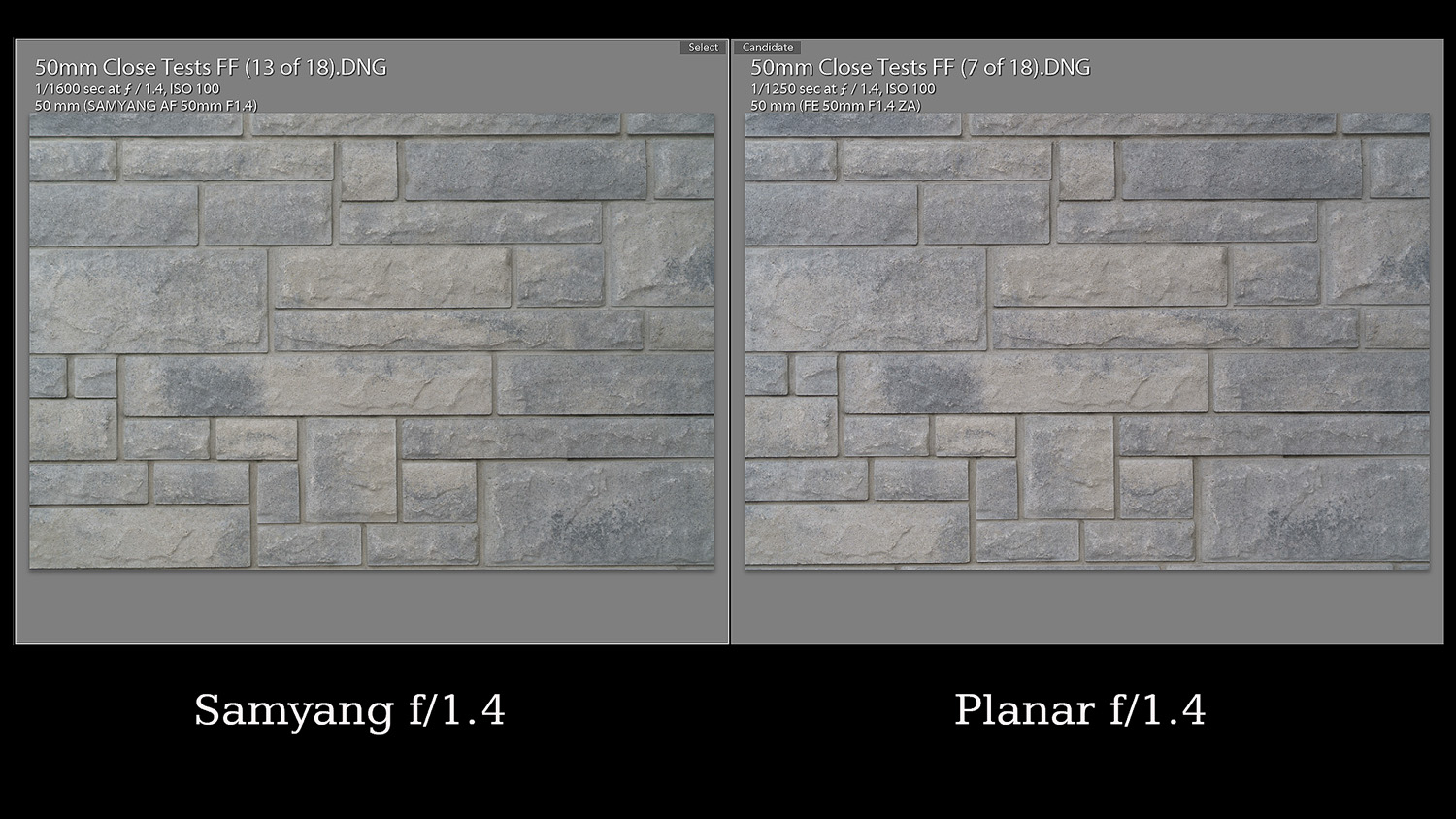
What's even more than interesting is that the while the subject magnification is similar at shut distances, the defocused highlights are bigger and softer on the Samyang. In my experience with other lenses, that ordinarily points to a larger diaphragm opening, which leads me to think that the Samyang may actually have a larger aperture opening despite both lenses having a stated aperture of f/one.4.
One thing is clear: the Samyang 50 has some of the nicest bokeh rendering from a 50mm lens that I've seen:
In doing direct comparisons betwixt the iii lenses, I noted that each of them had a certain graphic symbol in their color temperature. The Sonnar 55 tended towards the cool end of the spectrum. The Planar 50 was the about neutral (and accurate) in its interpretation of color. The Samyang was definitely on the warmer side. In some situations, I liked the outcome (it gives a warm, analog experience like in the example below):
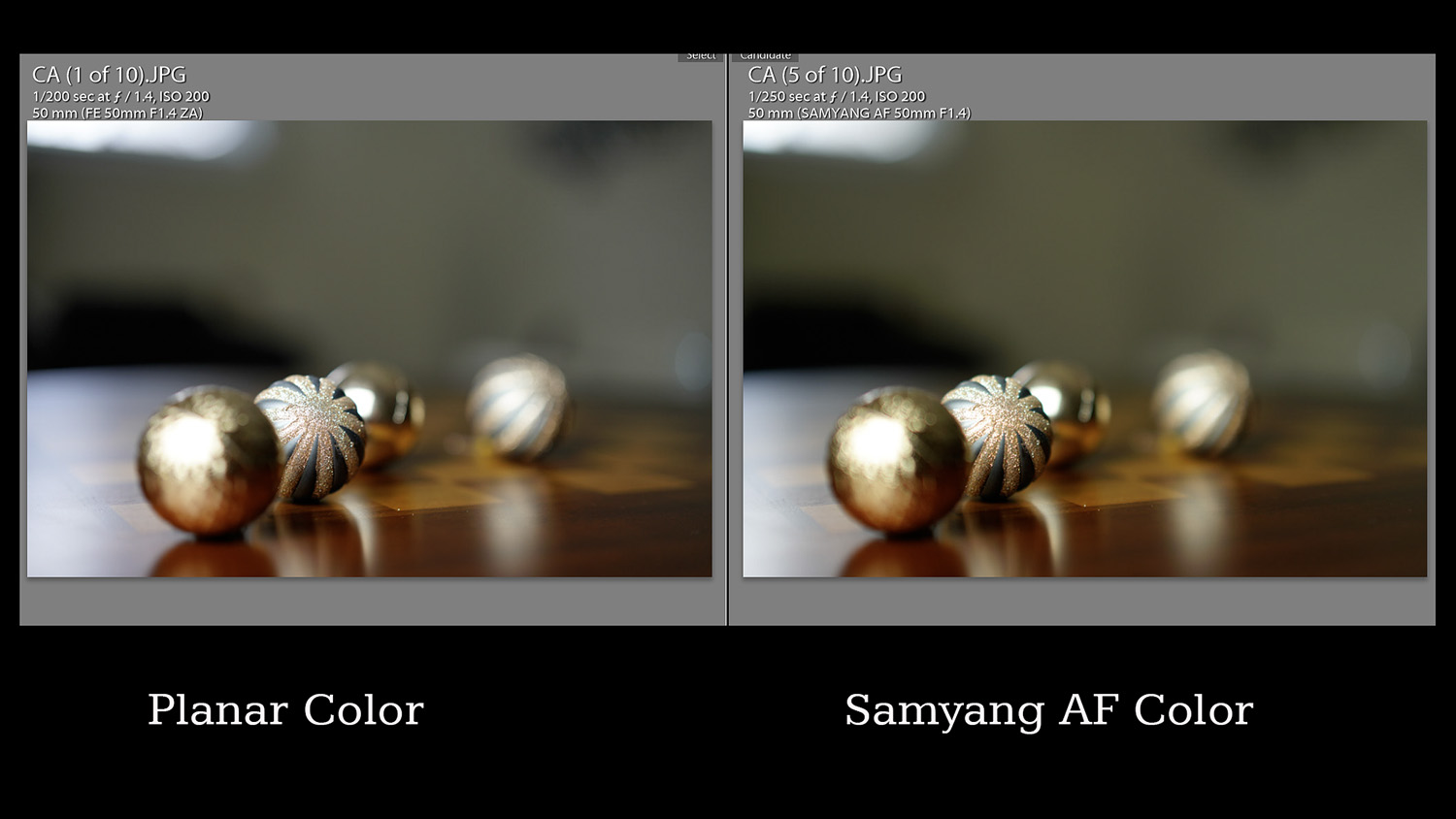
In other situations (landscapes, for case), information technology almost seemed similar a filter had been applied globally to the prototype; an effect I didn't like at all.
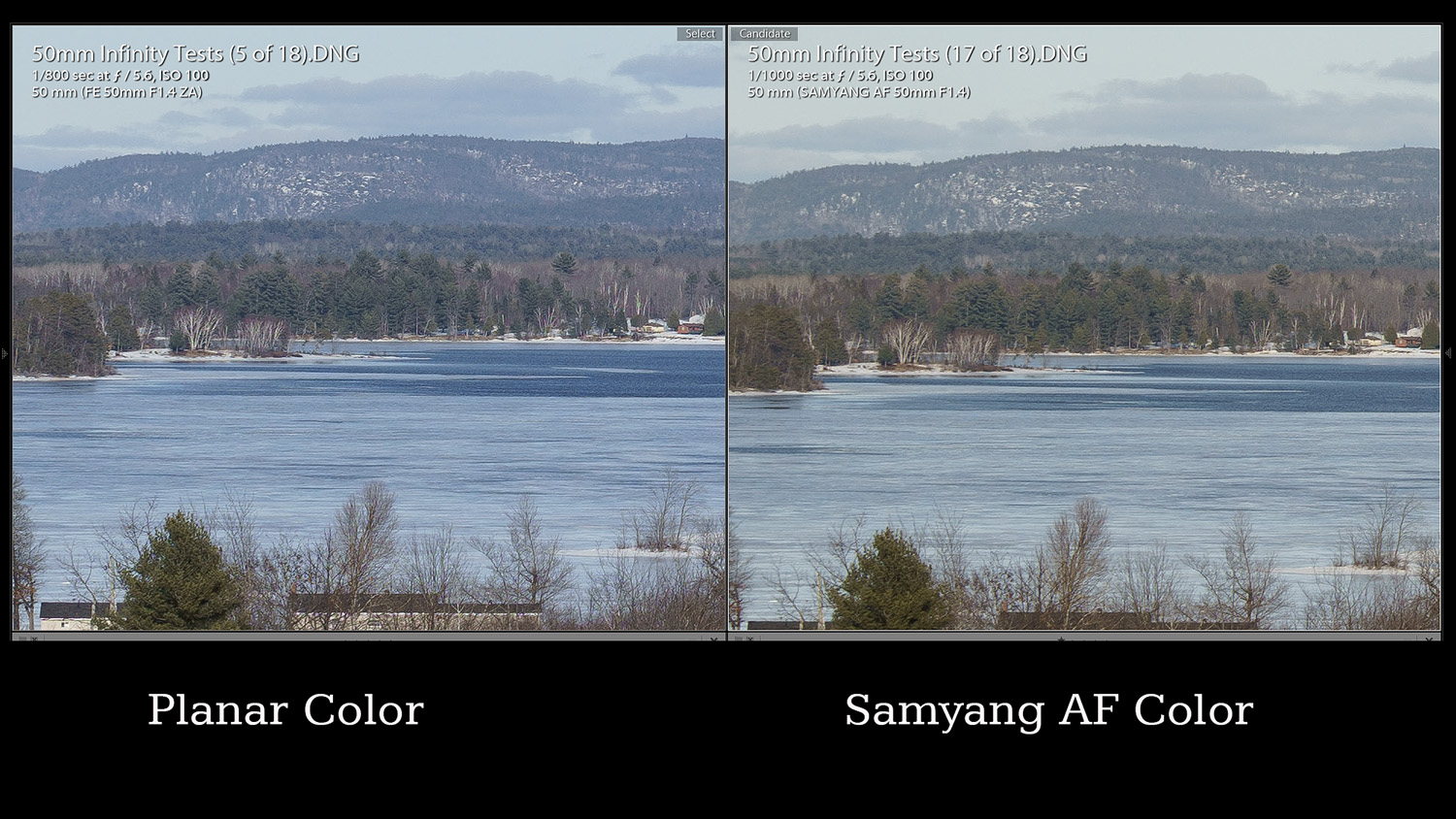
In one case again, this is a taste thing, only you might want to consider if this volition be an asset or liability to your particular shooting fashion.
One final ascertainment is that the Samyang fifty is somewhat flare prone. If you are dealing with very bright backlighting situations, you will feel both some veiling (loss of contrast) and some ghosting (prismatic blobs of color). This is a frame from a video where I tested this:
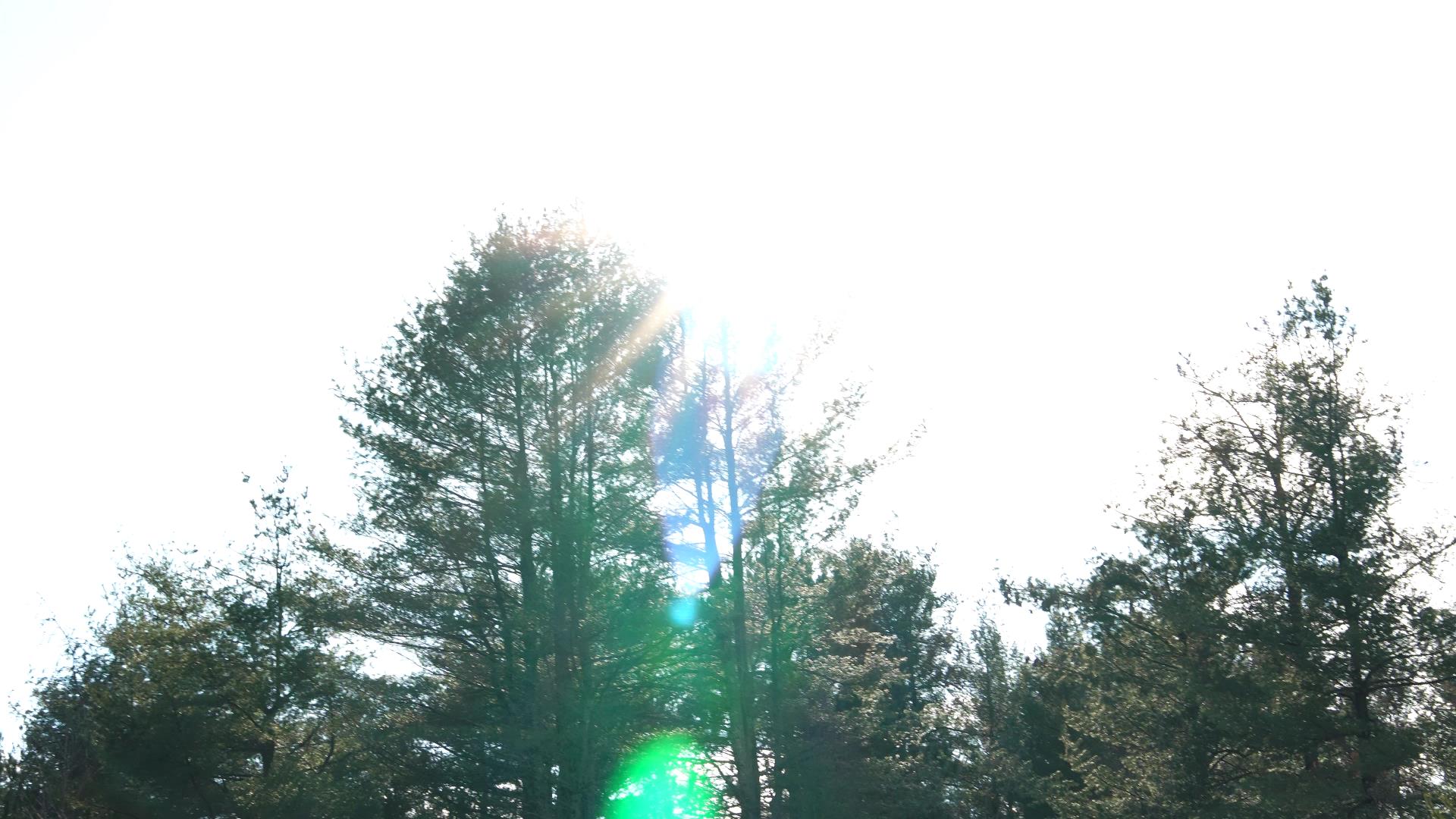
All in all, the image quality story is a little complicated. In some ways I like the look of the images that the lens produces; in other ways I don't. I've tried to present both strengths and weaknesses to help you brand an informed determination nearly information technology. Here's a look at a few more than images from the lens.
Every bit always, I would encourage y'all to visit my lens specific prototype galleries to assistance you evaluate the lens' performance in real world situations.
Conclusion
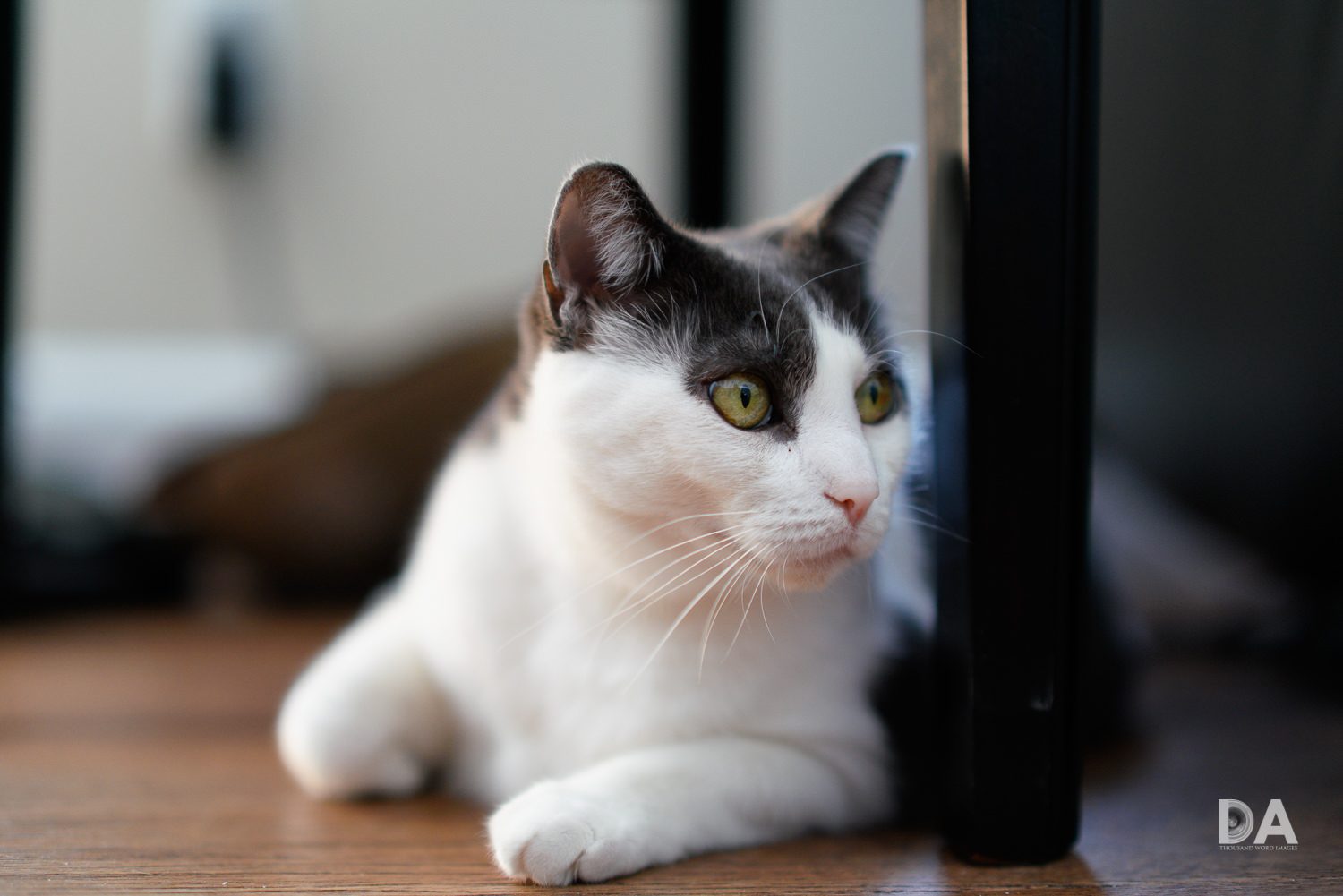
The Samyang AF 50mm f/1.4 is a somewhat complicated lens. It has a beautiful design and build, a reasonable size and weight, and has the best cost tag when compared to the more expensive Sony options. It's autofocus, notwithstanding, is somewhat archaic when compared to the more than sophisticated focus systems in the Sony lenses. I cannot recommend information technology to those who want to do video, but, while a little noisy, it does work fine for stills piece of work. The image quality is the most complicated of all, as information technology lags well behind either Sony/Zeiss option in absolute resolution and contrast, and only becomes competitive at f/iv or smaller. It has some real weaknesses, though the "look" of the images information technology produces are anything but clinical. They are genuinely pleasing in a lot of situations. If you are pixel peeper, look elsewhere, but if your tastes tendency more towards images that are more than well-nigh creative experience than clinical sharpness, then yous may actually observe a hidden treasure in the Samyang AF 50mm f/ane.4. It will be a disappointment to some, and a delight for others. Which one are you lot?
Pros:
- Attractive design and very squeamish build quality
- Good size/weight/residue
- Beautiful bokeh rendering
- Has a unique and artful global rendering
- Excellent cost compared to alternatives
Cons:
- Low contrast at wide apertures
- Lower resolution than competitors
- Flare prone
- Some chromatic aberrations
- Autofocus motor is noise and unsophisticated
Samyang AF 50mm f/1.4: B&H Photograph | Amazon | Amazon.ca | Amazon United kingdom of great britain and northern ireland | Ebay
Sony a7R III Camera: B&H Photograph | Amazon | Amazon.ca | Amazon United kingdom of great britain and northern ireland | Ebay
Peak Design Slide Light: Peak Design Store | B&H Photo | Amazon | Amazon Canada | Amazon UK
Sony a6500: B&H Photo | Amazon | Amazon.ca | Amazon Uk | Ebay
Peak Design Leash Strap: B&H Photo | Amazon | Amazon Canada | Amazon UK
Adobe Photoshop Artistic Deject 1-Year Subscription
Alien Skin Exposure X2 (Use Lawmaking "dustinabbott" to get ten% anything and everything)
Purchasing your gear through B&H and these links helps fund this website and keeps the articles coming. You lot tin also make a donation hither if you would like. Visit my Amazon page for some of my gear of selection! Thank you for your support.

Bang-up News! I can at present offering a 5% discount on all purchases at Amplis Foto, Canada's Leading Photographic Supplier. Please enter discount code: AMPLIS52018DA in your cart. It is practiced for everything in your cart, and is stackable with other coupons, too! It will take 5% off your entire society! Proceeds go towards keeping this site going and providing you with new reviews!
Bank check me out on:
DISCLAIMER: This article and description contains chapter links, which means that if you click on one of the product links, I'll receive a pocket-size commission. Equally an Amazon Associate I earn from qualifying purchases.
Source: https://dustinabbott.net/2018/03/samyang-af-50mm-f-1-4-review/
0 Response to "Rokinon Af 50mm F/14 Fe Lens for Sony E Reviews"
Post a Comment